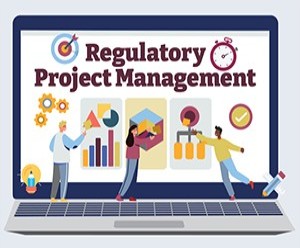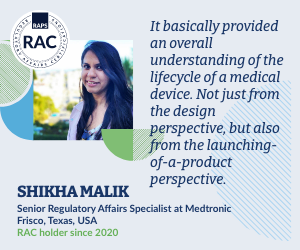FDA officials say high priority will be given to applications with endpoints that can be leveraged for other rare diseases
![]() Regulatory News | 09 June 2023 |
Regulatory News | 09 June 2023 |
Under the US Food and Drug Administration (FDA) rare disease endpoint advancement pilot program (RDEA), preference will be given to applications with well-developed efficacy endpoints that can be applied to other rare diseases. That was the message from agency officials speaking at a workshop sponsored by the Duke-Margolis Center for Health Policy and FDA.
Rare disease drug development is challenging, said Kerry Jo Lee, associate director of rare diseases in the Center for Drug Evaluation and Research (CDER) Office of New Drugs (OND) and leader of the Rare Diseases Team. These diseases are progressive, serious, and often lack adequate approved therapies. Small patient populations often restrict options for study design.
Yet these challenges are not deterring drug developers from getting into this space. Julienne Vaillancourt, policy advisor and rare disease liaison in the Office of the Director in the Center for Biologics Evaluation and Research (CBER), noted the growing number of applications being submitted for rare disease treatments.
Over 64% of all CBER approvals in the last 8 years were for rare disease treatments, with 34% designated as orphan drugs. She said a similar trend is also being observed in CDER.
The RDEA program was launched in October 2022 and fulfills a mandate of the FDA User Fee Reauthorization Act of 2022 to spur the development of rare disease therapies. The Food and Drug Omnibus Reform Act of 2022 (FDORA) requires FDA to hold up to three public workshops to discuss the RDEA program by September 30, 2026; this meeting was the first.
Lee noted at a recent meeting that while progress has been made in approving rare diseases, more work is needed in this area (RELATED: FDA officials: “Significant work’ still needed for rare disease drug development, Regulatory Focus, 6 June 2023).
Sponsors seeking to participate should have an active pre-investigational new drug application (IND) or IND for a rare disease, and a novel efficacy endpoint intended to establish substantial evidence of effectiveness for a rare disease treatment.
An endpoint is considered novel if it has never been used to support drug approval or if it has been substantially modified from previous use to support drug approval.
The agency will accept a single proposal for the pilot for Q4 FY 2023. For FY 2024-2027, FDA will accept up to one RDEA proposal per quarter, for a maximum of three per year. There will be 13 proposals accepted overall for the overall program. FDA will start accepting applications on 1 July for RDEA.
FDA outlines preferences
FDA’s Mary Jo Salerno, a science policy analyst in OND and a member of the Rare Diseases Team, said that given the limited number of RDEA proposals that will be accepted into the program, preference will be given to the following proposals:
Sponsors chosen for the program can participate in four meetings with FDA staff to discuss endpoint development with interdisciplinary experts in endpoint development.
Expansion of programs suggested
At the public hearing session, representatives of rare disease patient groups broadly supported the pilot.
Amy Brin, the CEO of the Child Neurology Foundation, supported the program’s mission of looking at broader endpoints for rare diseases.
“In the US one in 5 children will develop a neurological condition, these conditions can be a primary diagnosis like epilepsy or autism, but they can also be comorbidities of an existing rare diagnosis like seizures…. There are several challenges in developing treatments for this population. These treatments often focus on a single disease in isolation versus looking at a broader community of patients with different diseases that share the same impairment. This is a very narrow view.”
One representative recommended that the pilot be expanded to include more participants.
Adora Ndyu of Bridge-Bio Pharma and Every Life Foundation said, “The goals of the pilot are important and provide an opportunity to make a significant impact on drug development for rare diseases. The pilot aims to advance drug development for rare diseases by improving collaborations with sponsors and share learnings for endpoint development.”
She added, “We recommend that the agency expand the implementation and reach of the pilots. Given the over 8,000 rare diseases and the numerous developers of drugs for rare diseases, we have concerned that three pilot proposals per year over a three-year span will not sufficiently address endpoint development challenges.”
Duke-FDA meeting
Rare disease drug development is challenging, said Kerry Jo Lee, associate director of rare diseases in the Center for Drug Evaluation and Research (CDER) Office of New Drugs (OND) and leader of the Rare Diseases Team. These diseases are progressive, serious, and often lack adequate approved therapies. Small patient populations often restrict options for study design.
Yet these challenges are not deterring drug developers from getting into this space. Julienne Vaillancourt, policy advisor and rare disease liaison in the Office of the Director in the Center for Biologics Evaluation and Research (CBER), noted the growing number of applications being submitted for rare disease treatments.
Over 64% of all CBER approvals in the last 8 years were for rare disease treatments, with 34% designated as orphan drugs. She said a similar trend is also being observed in CDER.
The RDEA program was launched in October 2022 and fulfills a mandate of the FDA User Fee Reauthorization Act of 2022 to spur the development of rare disease therapies. The Food and Drug Omnibus Reform Act of 2022 (FDORA) requires FDA to hold up to three public workshops to discuss the RDEA program by September 30, 2026; this meeting was the first.
Lee noted at a recent meeting that while progress has been made in approving rare diseases, more work is needed in this area (RELATED: FDA officials: “Significant work’ still needed for rare disease drug development, Regulatory Focus, 6 June 2023).
Sponsors seeking to participate should have an active pre-investigational new drug application (IND) or IND for a rare disease, and a novel efficacy endpoint intended to establish substantial evidence of effectiveness for a rare disease treatment.
An endpoint is considered novel if it has never been used to support drug approval or if it has been substantially modified from previous use to support drug approval.
The agency will accept a single proposal for the pilot for Q4 FY 2023. For FY 2024-2027, FDA will accept up to one RDEA proposal per quarter, for a maximum of three per year. There will be 13 proposals accepted overall for the overall program. FDA will start accepting applications on 1 July for RDEA.
FDA outlines preferences
FDA’s Mary Jo Salerno, a science policy analyst in OND and a member of the Rare Diseases Team, said that given the limited number of RDEA proposals that will be accepted into the program, preference will be given to the following proposals:
- Those that have the potential to impact drug development more broadly, such as one that use a novel approach to develop an efficacy endpoint or an endpoint that could potentially be relevant to other diseases;
- Applications that reflect or impact a range of different types of endpoints;
- For surrogate endpoints, those that use novel approaches for collecting additional clinical data in the premarket stage to advance the validation of these endpoints.
Sponsors chosen for the program can participate in four meetings with FDA staff to discuss endpoint development with interdisciplinary experts in endpoint development.
Expansion of programs suggested
At the public hearing session, representatives of rare disease patient groups broadly supported the pilot.
Amy Brin, the CEO of the Child Neurology Foundation, supported the program’s mission of looking at broader endpoints for rare diseases.
“In the US one in 5 children will develop a neurological condition, these conditions can be a primary diagnosis like epilepsy or autism, but they can also be comorbidities of an existing rare diagnosis like seizures…. There are several challenges in developing treatments for this population. These treatments often focus on a single disease in isolation versus looking at a broader community of patients with different diseases that share the same impairment. This is a very narrow view.”
One representative recommended that the pilot be expanded to include more participants.
Adora Ndyu of Bridge-Bio Pharma and Every Life Foundation said, “The goals of the pilot are important and provide an opportunity to make a significant impact on drug development for rare diseases. The pilot aims to advance drug development for rare diseases by improving collaborations with sponsors and share learnings for endpoint development.”
She added, “We recommend that the agency expand the implementation and reach of the pilots. Given the over 8,000 rare diseases and the numerous developers of drugs for rare diseases, we have concerned that three pilot proposals per year over a three-year span will not sufficiently address endpoint development challenges.”
Duke-FDA meeting
© 2025 Regulatory Affairs Professionals Society.














